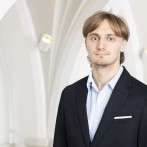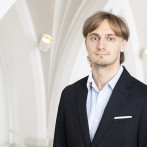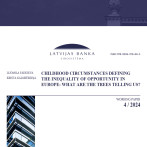Manufacturing production volumes unchanged in July
According to the data of the Central Statistical Bureau, the volumes of manufacturing production remained unchanged in July (seasonally adjusted data, month-on-month). Year-on-year the manufacturing production volumes have grown 7.3%. In recent months, the dynamics of manufacturing have fluctuated – growing one month, dropping the next, however, this month the manufacturing production volumes have remained unchanged. Against the backdrop of negative external developments, that seems to be a certain plus.
Strong growth in July was observed in the pharmaceuticals industry (+27.6%, seasonally adjusted data, month-on-month). In previous months it registered inexplicable minuses even though representatives of branch businesses asserted that they can detect no problems and it is business as usual in the branch. Apparently the fluctuations in the monthly data must have played a role. A growth in production volumes was also registered by textiles (+6.0%), beverage production (+4.2%), non-metal minerals or construction materials (+6.8%), as well as basic metal (+6.2%) industries (in the latter, the alloyed products of various metals and simple metal products – pipes, metal preparations etc. are listed).
Negative growth was observed in the branches that previously had bolstered manufacturing growth: wood industry (-3.5%) and fabricated metals (-11.9%. In this branch, specific metal details are produced, e.g., window frames, doors, automobile parts, reinforcements etc.) In the case of fabricated metal products, one cannot claim a trend, for the output of the branch has fluctuated in recent months. In the wood industry, however, a downslide is gradually setting in. Industry representatives themselves indicate that the second half of the year could be less successful. Given that a downslide in the construction market is taking place in Europe, one can hardly expect any sudden changes in the industry.
Growth was negative also in the production of wearing apparel (-9.4%), rubber and plastics (-5.9%), furniture (-2.4%), automobile (-9.4%), and chemicals (-5.2%). Output did not change substantially in the production of food (+0.1%) and electrical equipment (+1.0%).
July was a very successful month for mining and quarrying – its production output grew 9.5%, whereas in energy production the output volumes grew only slightly (+0.3%).
The confidence indicators published by the European Commission give rise to two kinds of feeling. On the one hand, the Latvian industry confidence indicator remains comparatively stable and has not been subject to a substantial downslide in recent months. Its components (the evaluation of order volumes, future output and stock levels) do not point to a substantial drop in output in the coming months. These data could generate some scepticism if only in conversations with industry representatives one did not get the impression that they really do feel relatively stable at the moment. On the other hand, -- and this is emphasized by the industry representatives as well – the future depends on the developments in Europe. If we look at industry confidence indicators in Europe, the picture is far from rosy. The industry confidence has been dropping substantially in most countries. There are but a few exceptions (Finland, Sweden, Estonia, and Malta). Such a drop in confidence will sooner or later lead to a drop in the real order volumes and will impact the Latvian industry as well. At the moment we can draw solace from the fact that confidence indicators are still stable in our region.
The August PMI Purchasing Managers' Index points to a greater pessimism in the industry future outlook not only in Europe but also globally (Japan, South Korea, Taiwan, China etc.). A negative surprise was the drop in the Swedish PMI in August to 45.1 points (from 50.6 in July). The German PMI and SENTIX indicators also evidence a drop in output volumes. That indicates a possibility that our region is gradually being reached by the pessimism originating in southern Europe. At the same time it is pleasing that the Russian PMI still hovers above the 50-point mark. That points to industrial growth. It is a successful development of the Russian economy that is considered a precondition for a stable manufacturing growth even during European downturn by branch representatives (particularly in food and metal manufacturing branches).
It is pleasing and a little surprising that, despite an unfavourable external background, Latvian manufacturing (and economy at large) has managed to continue growing in recent months. It can be expected that in the coming months a fluctuating development of manufacturing, without any strong trends, will continue. Developments in Europe can, of course, make their own adjustments in the everyday life of Latvian manufacturers. At least for now, however, most industry representatives do not worry much about the possible developments in the future but are busy working on the diversification of their markets and their product portfolios as well as on the improvement of quality aspects. The dynamics of investment is a case in point: investments are flowing into wood and metal manufacturing as well as the food industry even though there is information from time to time about sizeable investment projects in branches that have hardly been at the top of the Latvian manufacturing growth.
Textual error
«… …»






